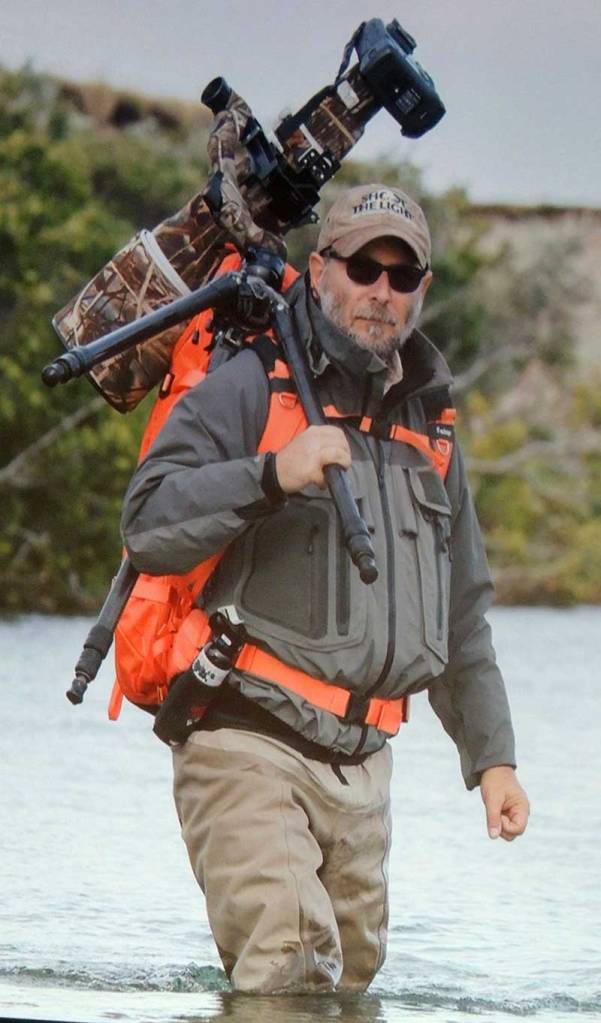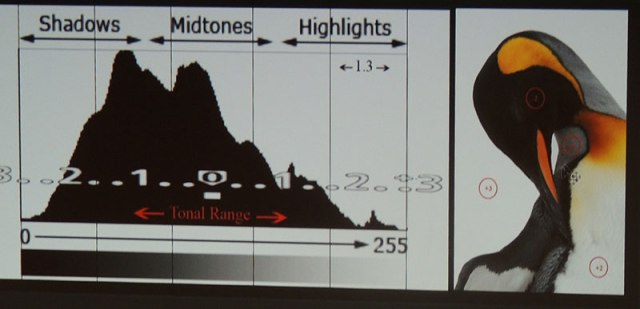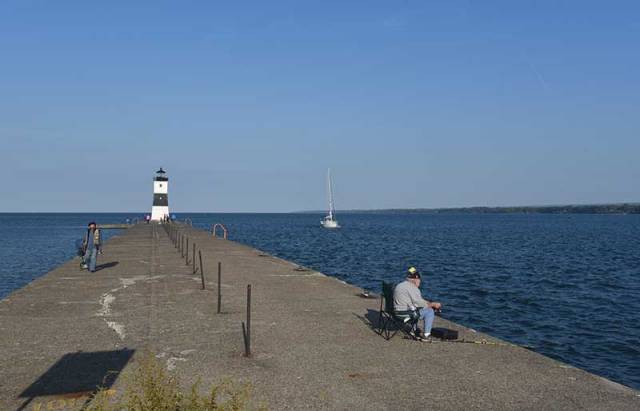On Saturday, October 15th at Gannon University in Erie, Pennsylvania, I attended a full-day seminar with award-winning wildlife photographer and Canon Explorer of Light, Charles Glatzer. He is founder of Shoot the Light.
The Photographic Arts Society of Northwestern Pennsylvania in conjunction with the Erie Photography Club offered this event. The presentation was to enhance visionary skills, as well as camera technical execution. He discussed how to be a cut above with examples of using creative techniques, compositional elements and light. The event was sponsored by Canon.
While I am not a Canon shooter nor am anywhere near his skill of photography, I did very much love his presentation. I feel he might have talked above some attending, in that some of what he presented was geared more to very experienced photographers. It might have confounded some, especially those not fully familiar with their cameras or lacking experience shooting in various weather conditions.
His suggestions on camera menu settings had comparable settings for Nikon as well. Much of his advice on settings were things some in attendance do not use or even knew the camera could do. I understood all of what he was saying, and did learn important things from the talk.
One bit of advice on exposure was understanding how exposure works. For instance, realizing that the background does not matter (as the light stays the same). The exposure will be the same as long as the shot was metered correctly for the subject.
Why this was important is because many digital photographers rely too heavily on auto or scene settings. When doing this, the camera makes all the decisions and constantly changes the exposure with any movement on that subject. So the image one wants may not be the one the photographer gets. Below is an example of the woodpecker he presented. Same camera settings across all backgrounds. (Please excuse the photos from the talk. I took them off the screen in a darkened lecture hall sitting at the very back.)
I myself use Manual at all times on my D750 as you can see in my bird photos, but on my smaller P510, have used Scene settings like Sports Mode. A post I did on GWGT talks about getting photos on a moving bus with this little camera. The next post, I used manual on the P510 shooting the Golden Hour. The P510 is a very handy piece of equipment. You can see images of Autumn color in Niagara Falls with this camera. I was not planning on photographing, but always carry the P510 in the car.
Another example below, showed how looking at tonal ranges across an image on the histogram will determine whether to add or subtract stops to make the exposure one is looking for. The histogram is a graphic representation of the tonal range in a photograph. Its analysis of the image’s tonal range provides a precise check on exposure. He shows where he metered for the exposure on the penguin and how the shadows and highlights fell upon the histogram. The camera’s meter you will find in the view finder. You can change how it evaluates a scene on many cameras too.
Here is a chart that he handed out on his business card. It is useful for sunny conditions. I went out and shot like I usually do with my wide-angle lens on the D750, then to try a setting he suggested.
My settings on the D750 were 1/100, f11, ISO 100 in the image below. These two images were just quick shots to compare what I would select normally then try his recommendations.
I tried his suggestion of 1/800 f8, ISO 200 in the image below and it worked as expected. The above scene has the sun coming in from the side, and below, the sun is behind me. No blinkies (highlight warnings) on either image.
Nearly everybody with a camera has tried photographing their backyard critters in their yard. Some photographers are a bit more serious and have invested in a better camera, nicer lenses and professional tripods. They travel to better locations too.
While Charles’ photography requires some expensive equipment and costly travel, I found the techniques and thought processes something most photographers would appreciate knowing. His presentation is one you should not miss if you have the opportunity.
Another tip was understanding animal behavior which is paramount to getting consistently successful wildlife images. Being a keen observer is something worth developing and something I enjoy doing myself. I might add that reading up on where and when animals migrate is very important too. You have to know when they are expected in your area.
He loves the cold weather as do I. In snow, it is best to spot meter on the snow then add 2 stops. This gives some definition to the foreground snow. I use exposure compensation +2 many times because you know the snow is an exposure constant. You can adjust shutter speed as well. I do love shooting in inclement weather.
One thing he discussed on composition is waiting for the right shot and having the right background. That might mean having the camera set up at a place where an animal is likely to show up. Like above, the owls often sit high on poles. He might wait hours for that owl to come to ground though.
Many times, the best images have animals engaged with humans by looking right at the camera. He likes the little cock of the head towards the camera. I often try to wait for that look too. I get it more often with songbirds. Hawks and eagles while they might look at you, that is often the time they decide to leave. He also said straight on can be a good mood setter, like my owl photo opening the post.
Catch light is important, but the animal must be properly positioned for the light to reflect in the eye. You are the one that moves to make that happen.
Another tip I am not sure how many use is the autoexposure lock. I tried to explain this to a friend. It is when you position the subject in the selected focus point, then depress the shutter half-way, then you press the AE-L button on the camera to lock both focus and exposure. This assures as long as the subject does not move into differing light conditions, you can just keep shooting the subject without changing the settings. When the camera goes off, the AE-L goes off. Or just push the button again.
He said this is to eliminate some things so you can concentrate on composition. I used the AE-L on the hawk images above since it was stationary for some time.
I found I used a lot of what he suggested. He stressed setting the exposure in camera ahead of time for the best lighting and only shooting the subject when these conditions are present. He says, “Eliminate the variables by concentrating on one task at a time.” This means keep your eye on the subject.
Live View is handy too although I have only ever used it when the camera is on the tripod. I guess the reason is because since film days, I have always looked through the view finder. Having my small P510, I do use the monitor for seeing what I want to be in focus. The view finder is so small and inconvenient on that camera, but I will use it to save the battery.
One thing that made his images really a cut above was where he decided to position his camera in relation to the subjects. Many of his shots were from lying on his belly. I too like to get down to the level of my subject. The swan image and cardinal images were from a kneeling position. Don’t you like the cardinal’s cock of the head? I learned a lot from Charles. He was funny and entertaining too.
Whether you shoot little or big birds, common or exotic animals, his presentation was well worth the time. Click the link on his blog above. You will be amazed at his photographs. You can even travel to these locations with him, pretty reasonably priced I might add.
























A lot of good info. Thanks for sharing some of what you heard.
Thanks David. It was a very informative seminar.
What a wonderful opportunity. I think beginner photography classes are easy to find, it’s the advanced tips and tricks that are harder to come by. I suppose it helps being part of a photography group or club to be in the know. Thanks for sharing some of the information you learned. You’re lucky to have such a class available in your area.
It really was Karin. I find in the camera clubs often the presentations are geared to beginners to intermediates, not people with 30 years experience. I was just talking to a local photographer and mentioned this, but qualified it by saying myself, I have only in the last few years (three seriously beyond backyard feeder birds) started doing wildlife photography, and that is a whole different experience. I would so love a trip with this speaker, Charles. He goes to amazing places, and not for a huge amount of money. I would have to rent a long lens and tripod though (maybe a carbon fiber tripod with a gimbal head). Otherwise those amazing shots would not be had.
did you take all these photos? they are beautiful! I especially liked the female Cardinal and the swan.
Thank you, yes I did. I see you live on Vancouver Island, British Columbia. I would love to visit there. I have been to Seattle a couple of times and have always wanted to see Western Canada. I live on the Canadian border, US side in Niagara Falls.
Loving your post – lover of the birds and photography too 🙂 My co-worker’s daughter is a Freshman at Gannon
Thank you, Glad you stopped in to visit.
This is such a fantastic, informative, packed post, filled with marvelous photos, Donna! Don’t be surprised if I come back to it with another comment later;-)
Thank you. Glad you enjoyed.
I went to Glen Park over the weekend intending to get some pretty leaf photos. About 20 paces into the park, I saw what looked like a stuffed toy on a stump. It turned out to be a real hawk. I got two shots, then the bird decided to fly. I got one shot of it leaving the stump, but instead of continuing to shoot, I took the camera away from my face because the bird seemed to be coming right at me. I got a few shots of the bird perched on a fence and on a wire, but nothing spectacular. I need to learn animal behavior!
I bet your photos turned out fine. Great it flew towards you, they don’t do that often. Best photos that way.